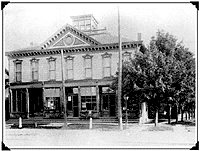
The present building, circa 1848, was constructed by Demeter Wehrle, a manufacturer of fine furniture and caskets.The business was later joined by L. Stanely Beach and his brother-in-law, Edward Tuyn. Considered to be the oldest Village business, the family tradition continues under the direction of Edward’s son, Peter E. Tuyn.
It began with the first house built in Erie County, popularly known as the Evans House now marked by a plaque at Main and Mill, Williamsville, by the original surveyors of the area, John Thomson and Joseph Ellicott, in 1780.
Lumber to build more houses and businesses had to be milled, and Ellicott built the first mill along the present Ellicott Creek, then called Eleven Mile Creek. He failed in that venture, but the idea was a good one whose success depended on the enterprise of another developer, described by some as a land speculator, Jonas Williams, in 1804.
He also built two grist or feed mills, a sawmill, tannery, distillery, and dams and raceways to power the mills. He owned and operated so much in the area it became known as Williams Mills, later Williamsville.
The present-day Williamsville Water Mills, in continuous operation since 1811, is the last reminder of that era and is now a registered national landmark.
The War of 1812, brought fame and misfortune to the area, as growth declined and businesses failed.
However, another enterprising man, Oziel Smith, bought up much of the business property and all water rights to Ellicott Creek, developing them into thriving concerns, and completed the Eagle House, an inn and coach stop, in 1832, partially to fill the needs of new settlers brought in by the Erie Canal.
In the mid 1800s a business directory listed farmers, dealers in general merchandise, nurserymen, saloon keepers, harness dealers and painters, broom dealers, lime dealers, blacksmiths, wagon makers and dealers in boots and shoes as well as attorneys, physicians, dentists, brokers and dealers.
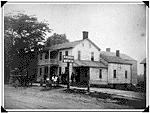
The Eagle House was built by Oziah Smith in 1832. Before it opened, it burned to the ground and had to be rebuilt. Originally a stagecoach stop and inn, it has remained a thriving business location through the years, and rumors still persist of its use during the Civil War as part of the Underground Railroad.
A map shows one hotel, four schools, five churches, a brewery, two quarries, several grist and saw mills, a tannery, a furnace, cement works, a bedstead factory, carding mill, paper mill and a forge.
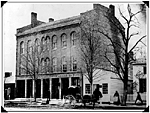
The Roneker Building,(“Hopkins Block) built in 1854 has always been a retail and business center, many of the tenants staying for decades due to it’s ideal location in the heart of the Village
More modern transportation and the increased importance of the port of Buffalo to that city and area manufacturing led to a decline in the village’s industrial base at the turn of the century.
Business continued as usual, however, as merchants, innkeepers and professionals provided services to visitors from the city and residents of the surrounding countryside, much as they do today.
Over 200 years have passed since Jonas Williams and others arrived at the junction of Ellicott Creek and the “Buffalo Road” to give name and form to a small community called Williams Mills. During those years there has been growth and decline, success and failure, yet through it all, the identity and integrity of the community have endured.
Although surrounded on all sides and dwarfed by the larger Town of Amherst, Williamsville maintains a geographic and political independence. The village form of government is said to be “closest to the people.” Certainly it has served them well, as they have served it.
The Village is celebrating their 200th birthday with many events planned by the Bicentennial Committee. Join the fun and explore the history.
An expanded village history is available with a walking tour at the Village Hall, 5565 Main Street.
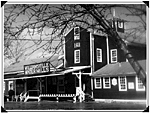
This early 1960’s view of the Mill shows many of the architectural details preserved through our Millennium Restortation Project.
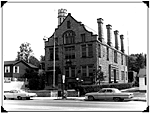
Village Hall, razed in 1956, was built inn 1908 on land donated by John Hutchinson family. Originally housing the Amherst Town offices, in 1912, part of the structure was converted to use as the first Williamsville Library.
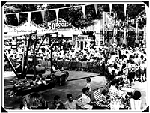
Glen Park amusement area 1966 was part of the Harry Altman Glen Park Casino complex. The park was the center of attraction for residents around Western New York. A fire destroyed the park in September 1968. Back in 1976, the Village of Williamsville and Town of Amherst acquired the 9.7 acre parcel for parkland.
